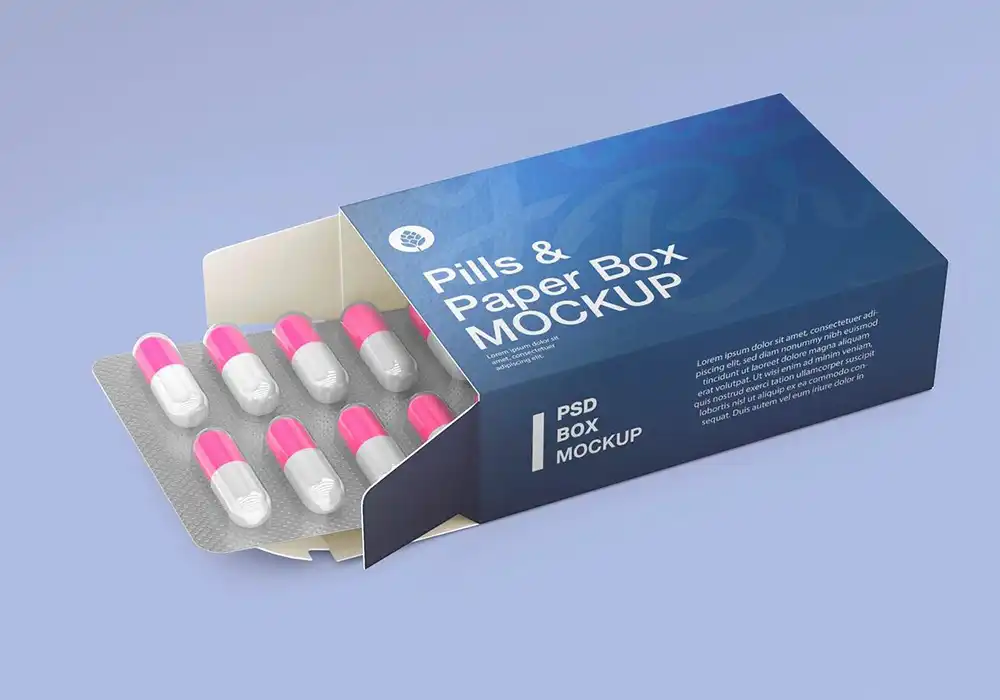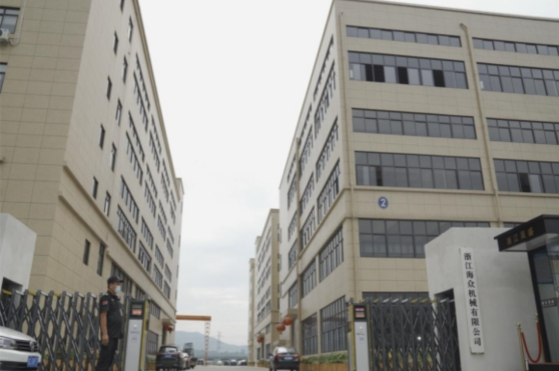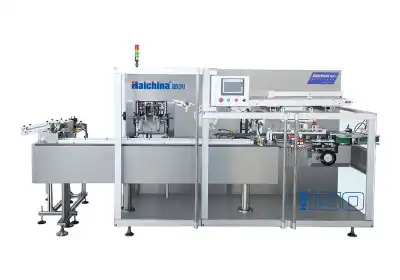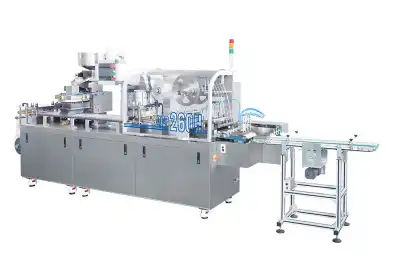The Evolution of Cartoning Technology in Medical Packaging
Historical Perspective on Blister Pack Cartoning
The journey of cartoning technology in medical packaging has been marked by continuous innovation. Early manual methods gave way to semi-automated systems, which have now evolved into fully automated, high-speed cartoning machines. This progression has been driven by the need for increased efficiency, reduced human error, and improved product safety in the pharmaceutical industry.
Advancements in Cartoning Machine Design
Modern cartoning machines incorporate cutting-edge features such as servo-driven mechanisms, vision inspection systems, and modular designs. These advancements allow for greater precision, flexibility, and reliability in the packaging process. Manufacturers like Zhejiang Haizhong Machinery Co., Ltd. have been at the forefront of developing these state-of-the-art cartoning solutions.
Integration of Smart Technologies
The integration of smart technologies, including IoT sensors and data analytics, has revolutionized cartoning processes. These innovations enable real-time monitoring, predictive maintenance, and enhanced quality control, further elevating the standards of medical packaging.
Key Features of Modern Cartoning Solutions for Blister Packs
High-Speed Operation and Precision
Modern cartoning machines are designed to achieve exceptional production speeds while maintaining the highest standards of accuracy. They can efficiently process a variety of blister pack sizes, shapes, and configurations, ensuring seamless insertion into cartons with minimal errors. Advanced mechanical and control systems enable smooth, synchronized movements that prevent damage to delicate products. This combination of speed and precision is critical for pharmaceutical manufacturers who must meet tight production deadlines while ensuring that each packaged product complies with strict industry requirements.
Versatility and Adaptability
Adaptability is a key strength of today’s cartoning technology. Operators can quickly reconfigure settings to handle different blister pack designs, carton dimensions, and even varied product categories. Changeovers are made faster through intuitive control interfaces and modular components, reducing downtime and increasing productivity. This level of flexibility is especially important in the medical and pharmaceutical sectors, where production schedules often include multiple product lines. By accommodating diverse packaging needs, these machines support both short production runs and large-scale operations efficiently.
Advanced Quality Control Mechanisms
In pharmaceutical packaging, maintaining product integrity is non-negotiable, and modern cartoning solutions are equipped to meet that challenge. Integrated inspection systems use cameras, sensors, and automated checks to verify product presence, confirm proper orientation, and detect any physical defects. These real-time quality control measures reduce the likelihood of packaging errors and help prevent costly product recalls. By ensuring that only correctly packaged and fully compliant products move forward in the supply chain, these systems strengthen both consumer safety and brand reliability.
The Impact of Efficient Cartoning on Medical Packaging
Enhanced Product Protection and Safety
Efficient cartoning systems are essential in safeguarding medical products against environmental threats such as moisture, light, and dust, as well as against unauthorized access or tampering. These solutions use precise sealing mechanisms and robust packaging materials to preserve product integrity from the point of manufacture to the end user. By maintaining packaging stability and preventing contamination, they help ensure that medicines, devices, and other medical supplies retain their efficacy, safety, and reliability throughout transportation, storage, and distribution channels.
Improved Compliance with Regulatory Standards
Medical packaging is governed by rigorous international and local regulations designed to protect patient health and ensure quality control. Modern cartoning machines are built to meet these demanding requirements, including serialization, batch coding, and traceability features that comply with GMP guidelines and other industry standards. This level of compliance not only safeguards manufacturers against legal risks but also enables them to confidently enter diverse global markets. By integrating regulatory considerations into packaging design, companies enhance their reputation for quality and trustworthiness.
Cost-Effectiveness and Operational Efficiency
Although the acquisition of advanced cartoning equipment can require significant upfront capital, the operational benefits far outweigh the initial expense. These machines automate repetitive tasks, reducing the need for manual labor and decreasing the potential for human error. They also optimize material usage, lowering waste levels, and enable higher production speeds, boosting throughput. Over time, these efficiencies translate into substantial cost savings, allowing medical packaging operations to maintain profitability while upholding the high standards required by the healthcare industry.
Conclusion
Cartoning solutions for blister packs have become indispensable in the medical packaging industry. As technology continues to advance, these systems will play an increasingly vital role in ensuring product safety, regulatory compliance, and operational efficiency. Manufacturers who invest in state-of-the-art cartoning machines position themselves at the forefront of the industry, ready to meet the evolving demands of medical packaging with precision and reliability.
FAQs
What are the main advantages of using automated cartoning machines for blister packs?
Automated cartoning machines offer increased speed, precision, and consistency in packaging blister packs. They reduce human error, improve efficiency, and ensure compliance with regulatory standards.
How do cartoning solutions contribute to product safety in medical packaging?
Cartoning solutions enhance product safety by providing secure sealing, tamper-evident features, and protection against environmental factors. They also incorporate quality control mechanisms to detect defects and ensure proper packaging.
Can cartoning machines handle different sizes of blister packs and cartons?
Yes, modern cartoning machines are designed to be versatile and can be adjusted to accommodate various blister pack sizes and carton dimensions, offering flexibility for different product lines.
Innovative Cartoning Solutions for Medical Packaging | Haichina
At Haichina, we pride ourselves on delivering cutting-edge cartoning solutions tailored for the medical packaging industry. Our state-of-the-art cartoning machines combine precision, speed, and reliability to meet the exacting standards of pharmaceutical manufacturers worldwide. With our commitment to innovation and customer satisfaction, we offer customizable packaging lines that ensure product integrity and regulatory compliance. Experience the Haichina difference in cartoning technology - contact our expert team at [email protected] to explore how our solutions can elevate your medical packaging operations.
References
Johnson, M. (2022). Advances in Pharmaceutical Packaging Technology. Journal of Medical Packaging, 15(3), 78-92.
Smith, A., & Brown, B. (2021). The Impact of Automation on Medical Device Packaging. International Journal of Healthcare Engineering, 8(2), 145-160.
Lee, C. (2023). Regulatory Compliance in Pharmaceutical Packaging: A Global Perspective. Pharmaceutical Technology Review, 12(4), 56-71.
Garcia, R., & Martinez, L. (2022). Smart Technologies in Medical Packaging: Current Trends and Future Prospects. Journal of Intelligent Manufacturing Systems, 9(1), 23-38.
Thompson, K. (2021). Cost-Benefit Analysis of Automated Packaging Solutions in the Pharmaceutical Industry. Healthcare Economics Review, 18(2), 112-127.
Wilson, D., & Taylor, E. (2023). Quality Control Mechanisms in Modern Cartoning Systems for Blister Packs. Journal of Packaging Science and Technology, 14(3), 89-104.





